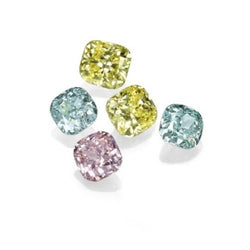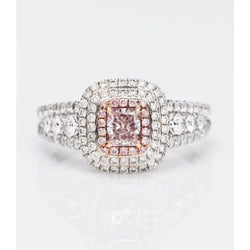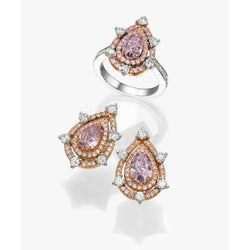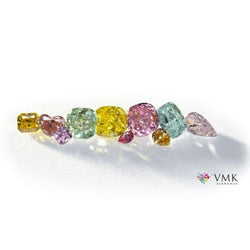What are Treated Diamonds?
Since the recent surge of global interest in the fancy color industry and the advancement of technology, it is now easy to artificially create diamonds of almost any color. These diamonds are created using synthetic diamonds or natural diamonds possessing an unattractive color (such as an undefined yellowish or brownish diamond).
It is important to keep in mind that natural natural grow colored diamonds and treated colored diamonds are two completely different products and they operate on different markets. Fancy color diamonds are inherently unique. They are a rare product of nature and no two are ever the same. It is this very uniqueness that gives them their value and preciousness. On the contrary, treated colored diamonds are manufactured at will and can be reproduced easily. The intrinsic worth and appeal of a natural and unique fancy colored diamonds cannot even begin to parallel those of a treated diamond.
Some buyers may be attracted to the significantly lower prices of treated colored diamonds. However it is important to bear in mind that the resale value of a treated colored diamond is close to zero. No respectable auction house or buyer would ever consider such a stone. Compare this to fancy colors, which have only appreciated in value over the past 25 years and are considered by most to be a sound investment.
In order to be sure that your stone’s color is natural, it is crucial that your diamond is examined and certified by an approved diamond laboratory. They will issue a certificate stating the diamond’s origin and certifying its natural color.
Laboratory Treatments and Processes
Because artificial means of changing a diamond’s color have been produced in the last few decades, it’s critical to get a document such as the GIA certificate confirming the source of your fancy color diamond.
HPHT
This treatment introduced in 1999, which stands for “high pressure and high temperature” is a procedure primarily used on "premature diamonds" that did not fully crystallize upon release from erupting volcanoes. Finishing what nature started, pressure of up to 70,000 atmospheres and temperatures of up to 3,700°F (2,038°C) are applied. After only 15 minutes, a stone’s color grade can jump dramatically.
Type IIa diamonds are most commonly treated this way in order to remove structure defects that give the diamond a brown color. While at first HPHT was extremely difficult to detect, today institutes such as the GIA can determine if a diamond has undergone HPHT treatment.
Irradiation
The two most common irradiation methods are neutron and electron bombardment. The former treatment produces a green to black color that penetrates the whole stone, while the latter treatment produces a blue, blue-green, or green color that only penetrates about 1 millimeter deep.
Graphitization
Sometimes poor quality yellow or brown diamonds are exposed to high temperatures (1,650°F – 3,000°F / 900°C – 1650°C) in a vacuum in a process known as graphitization. Due to the increase in temperature, parts of the diamond turn to graphite, giving it a black or gray color. As opposed to naturally occurring black diamonds, which have black color scattered throughout, such diamonds enhanced via graphitization tend to be black only on surface-reaching cleaves and fractures.

 Pink
Pink Yellow
Yellow Green
Green Chameleon
Chameleon Blue
Blue Purple
Purple Violet
Violet Red
Red Orange
Orange Brown
Brown Gray
Gray Black
Black White
White Colorless
Colorless Radiant
Radiant Cushion
Cushion Pear
Pear Round
Round Heart
Heart Half Moon
Half Moon Baguette
Baguette Emerald
Emerald Asscher
Asscher Princess
Princess Marquise
Marquise Oval
Oval Shield
Shield Trapeze
Trapeze





